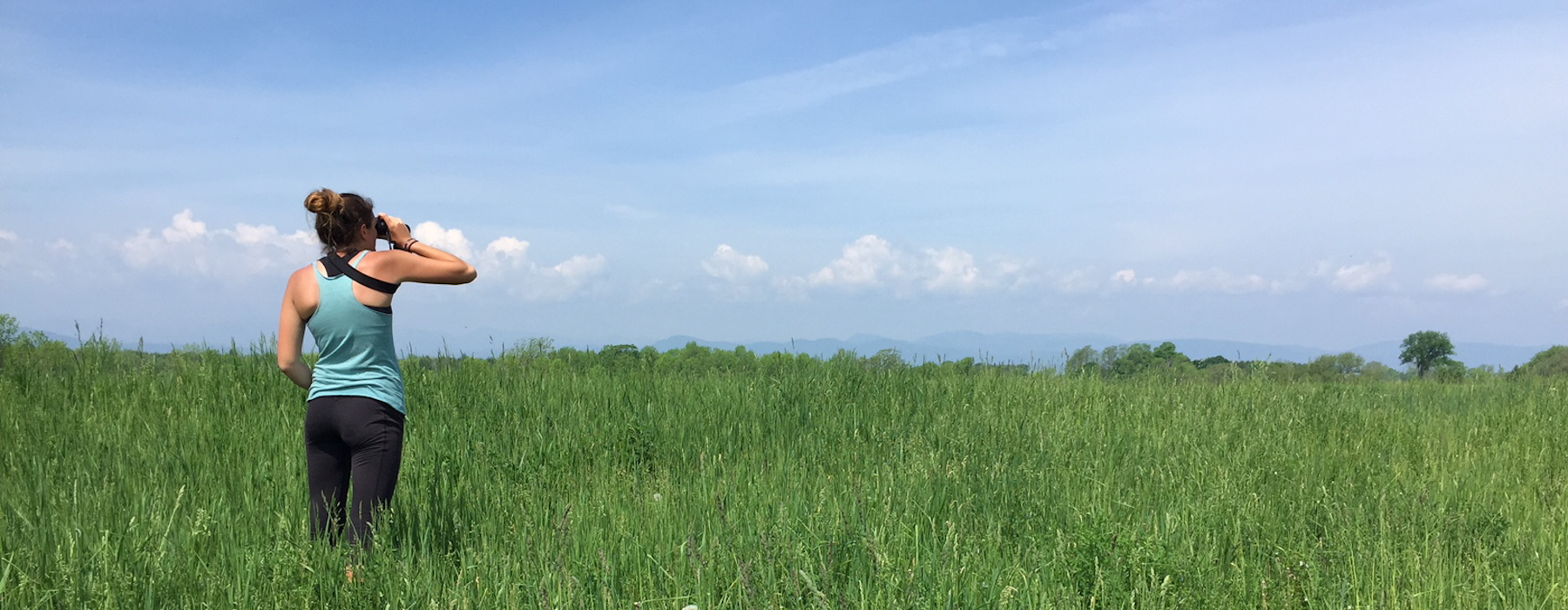Collaboration with birders and community scientists will be integral to the success of this project.
INCIDENTAL ENCOUNTERS
Report sightings of Eastern Meadowlarks wherever and whenever you encounter them.
Steps:
- Submit to Vermont eBird, either via the website or smartphone app, using the standard eBird Stationary Count protocol.
- Share the checklist with the eBird account “grasslandbirds”.
FULL SITE SURVEYS
This is the most active way to participate in the Blitz. We hope many of you will adopt a block to survey at minimum three times throughout the breeding season.
Adopt a block using the Blitz map
- Full site surveys intentionally focus your efforts on specific areas. After signing-up with the survey block(s) you’re interested in surveying, the Blitz coordinator will be in contact with you to discuss the area and your blocks, as well as the best route to survey.
Survey Birds
- Participants will survey each site three times during the breeding season of Eastern Meadowlarks (May 15th – July), each survey being approximately one month apart. Surveys should occur between 5:00 and 9:00 AM and be done in fair conditions; no precipitation with low winds.
- 10-minute point counts will be performed every 0.2 miles on public roads and trails.
- Do not venture onto private property without expressed permission from the landowner.
- 10-minute point counts will be performed every 0.2 miles on public roads and trails.
- Record the number of Eastern Meadowlarks you observe; if no meadowlarks are detected then enter a value of “0”.
- Note Breeding Codes if breeding behavior is observed.
-
- Some of the most commonly observed breeding behavior:
-
- CF Carrying Food
- Adult carrying food.
- CN Carrying Nesting Material
- Adult carrying nesting material; nest site not seen.
- P Pair in Suitable Habitat
- Pair observed in suitable breeding habitat.
- S7 Singing Bird Present 7+ Days
- Use only if you have observed a singing bird at the same spot (not elsewhere) one week or more earlier in the season.
- S Singing Bird
- Singing bird present in suitable nesting habitat.
- H In Appropriate Habitat
- Adult in suitable nesting habitat during its breeding season.
- CF Carrying Food
-
- Some of the most commonly observed breeding behavior:
-
- Note Breeding Codes if breeding behavior is observed.
- Download and print a map of your survey area; if you don’t have access to a printer, copies can be mailed to you.
- Record the location of any meadowlarks detected.
- Upload your sightings to Vermont eBird and share with the username “grasslandbirds”.
- New to eBird? Start here!
It’s also requested that participants include sightings of two other grassland species on eBird checklists: Bobolinks and Savannah Sparrows. If Grasshopper Sparrows, Vesper Sparrows, Sedge Wrens, or Upland Sandpipers are present at any site please contact us directly.
Monitor Land Management
- Download and print a map of your survey area; if you don’t have access to a printer, copies can be mailed to you. This is the same map used to record the location of meadowlarks from above.
- At each field along your survey route, record if it has been hayed recently.
-
- Indications of haying include fresh hay bales, cut hay on the ground, or noticeably short grass.
- If a field is something other than hay (such as row crops or athletic fields) please note as such.
-
- Submit these maps to the Blitz coordinator.
-
- Scan or photograph with a phone, upload to Dropbox or email to .
- Put in an envelope, mail to:
-








